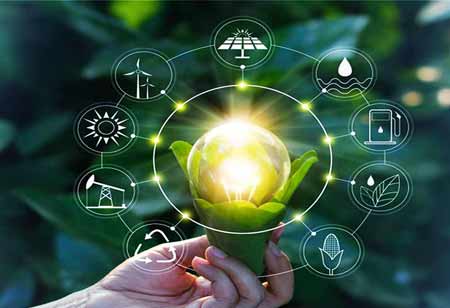Thank you for Subscribing to Energy Business Review Weekly Brief
Clean Energy Powered By Semiconductors
Semiconductors have huge potential to improve energy generation and decrease procurement costs.

By
Energy Business Review | Saturday, December 17, 2022
Stay ahead of the industry with exclusive feature stories on the top companies, expert insights and the latest news delivered straight to your inbox. Subscribe today.
Semiconductors contribute to electricity production by simplifying operations and reducing energy losses.
FREMONT, CA: Semiconductors have huge potential to improve energy generation and decrease procurement costs. Semiconductors can also be utilized to condition power from wind turbines and solar arrays so that energy can be fed into the electric grid and utilized by electrical equipment. In addition, the solar panels' photovoltaic (PV) cells rely on semiconductor materials to transmit light energy from the sun into possible power that can be transmitted to the grid. According to AZoCleantech, semiconductors can play a major role in ensuring the optimal harvest of renewable energy.
The semiconductors' capacity for enabling electricity to transmit through them at a modulated rate lets them convert energy harnessed from other renewable energy technologies like hydropower and wind turbines. In this procedure, semiconductors serve as efficient rectifiers, shaping or repairing the energy harnessed from clean energy sources so that it can be transferred to the electric grid with the tiniest energy loss. Generally, the semiconductors are established on secondary devices like drives and pumps regarding wind and water turbines, sensors in drives solar panels, and protection circuits in transfer stations and energy conversion to guarantee that the entire operations run efficiently with negligible power losses.
Although semiconductors have a part in harnessing clean energy, large semiconductor manufacturing facilities also require large amounts of energy, ranging up to 100-megawatt energy per hour. Yet, semiconductor materials can be utilized to offset this demand with the support of the internet of things (IoT) technology. This ability can watch and automate semiconductor fabrication, guaranteeing the need for minimal energy resources.
Progressively, firms depend on semiconductors to improve their operations and improve the transmission of electric energy generated from different renewable sources.






